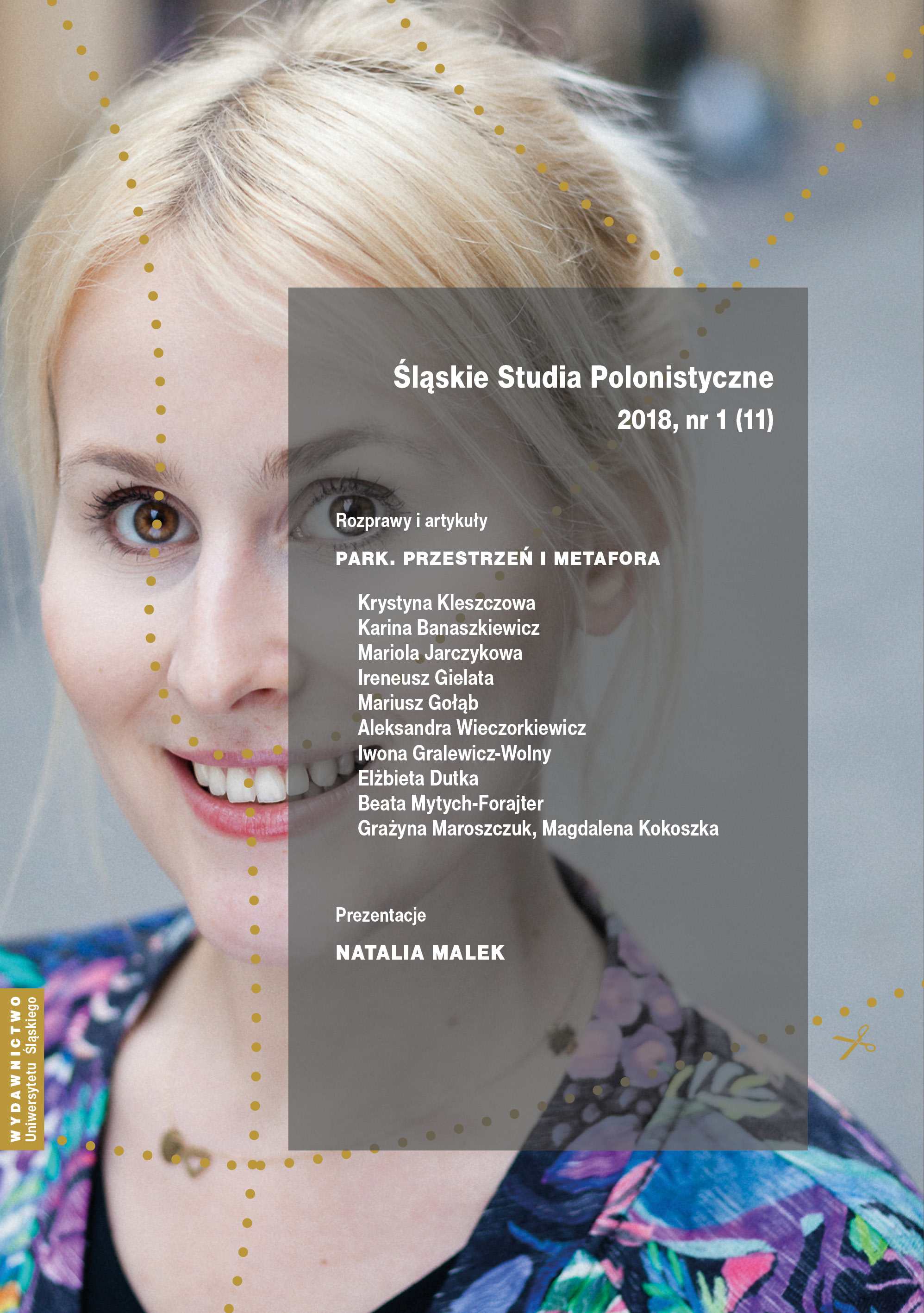Szczęśliwe ogrody dzieciństwa. Literackie obrazy przestrzeni parkowej w powieści „Piotruś Pan w Ogrodach Kensingtońskich” Jamesa Matthew Barriego
Happy Gardens of Childhood. Literary Portrayals of Garden Space in James Matthew Barrie’s Novel „Peter Pan in Kensington Gardens”
Author(s): Aleksandra WieczorkiewiczSubject(s): Language and Literature Studies, Studies of Literature, Other Language Literature
Published by: Wydawnictwo Uniwersytetu Śląskiego
Keywords: park; Peter Pan; James Matthew Barrie; Kensington Gardens; locus amoenus
Summary/Abstract: It is impossible to imagine London without its royal parks. One of the most beautiful among them is Kensington Gardens, forever connected with the figure of a boy who didn’t want to grow up: Peter Pan. This article provides an interpretation of James Matthew Barrie’s novel „Peter Pan in Kensington Gardens” (1906), centred mainly around literary portrayals of garden space, which becomes an embodiment of the paradise of childhood: Arcadia, a pleasant place, locus amoenus, allowing one to exist beyond evanescence, growing up and sadness. Kensington Gardens are London’s green island, primeval Neverland, where the fairy-tale and the magic are rooted: during a day it creates a playing space for “human children,” whereas at night it goes under the rule of Queen Mab and mysterious fairies. The outline of various interpretation paths which can be followed in Kensington Gardens are accompanied by the reproductions and analyses of Arthur Rackham’s illustrations, which in an outstanding way capture the whimsical genius of the author of „Peter Pan”.
Journal: Śląskie Studia Polonistyczne
- Issue Year: 2018
- Issue No: 1 (11)
- Page Range: 89-108
- Page Count: 20
- Language: Polish

